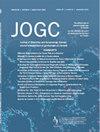在接受实体器官移植的妇女中,严重的孕产妇发病率和孕产妇死亡率与妊娠有关。
IF 2.2
Q2 OBSTETRICS & GYNECOLOGY
引用次数: 0
摘要
重要性:实体器官移植(SOT),包括肾、肝、心、肺和胰腺移植,在过去的几十年里变得越来越普遍。然而,很少有基于人群的研究试图全面量化与sot接受者怀孕相关的严重孕产妇发病率(SMM)和孕产妇死亡率。目的:确定SOT妇女在所有分娩妇女中的比例,并量化与SOT相关的SMM率和孕产妇死亡率。研究设计:我们对2003年4月至2018年3月期间加拿大(魁北克省除外)所有妊娠≥20周的医院分娩进行了回顾性队列研究。使用标准的SMM条件列表来定义SMM。逻辑回归为SOT和SMM/孕产妇死亡率之间的关联提供了校正的优势比(AORs),调整了年龄、胎次、胎次和其他混杂因素。结果:在研究期间分娩的4155747名妇女中,342名有SOT(63%为肾移植,25%为肝移植)。SOT组的综合SMM率显著高于非SOT组(134.5 vs. 9.97 / 1000;未经调整的OR为13.5,95%可信区间[CI] 10.1-18.0;a10.8, 95% ci 7.60-15.3)。SOT女性有更高的特定SMM类型发生率,包括严重先兆子痫(AOR 8.29, 95% CI 2.99-23.0)、子痫(AOR 10.8, 95% CI 3.42-34.1)、急性肾功能衰竭(AOR 93.9, 95% CI 58.3-151.2)、急性脂肪肝输血(AOR 21.3, 95% CI 2.89-157.8)、肝功能衰竭(AOR 91.4, 95% CI 11.6-722.4)、心脏疾病(AOR 7.52, 95% CI 2.72-20.8)和其他SMM。有SOT和没有SOT的女性中位住院时间分别为8天和3天;延长住院时间(≥7天)为22.3%∶1.78%(比率比12.5,95% CI 9.84 ~ 16.0)。结论:住院时间延长和严重发病率升高突出了实体器官移植妇女分娩的重大临床风险。本文章由计算机程序翻译,如有差异,请以英文原文为准。
Severe Maternal Morbidity and Maternal Mortality Associated with Pregnancies Among Women With Solid Organ Transplants
Objectives
Solid organ transplants (SOT), including kidney, liver, heart, lung, and pancreas transplants, have become more common in the last few decades. However, few population-based studies have attempted to comprehensively quantify severe maternal morbidity (SMM) and maternal mortality associated with pregnancies among recipients of SOTs. This study aimed to determine the proportion of women with SOTs among all delivering women, and to quantify the rates of SMM and maternal mortality associated with SOT.
Methods
We conducted a retrospective cohort study of all hospital deliveries at ≥200 weeks gestation in Canada (excluding Québec) from April 2003 to March 2018. SMM was defined using a standard list of SMM conditions. Logistic regression provided adjusted ORs (AORs) for associations between SOT and SMM/maternal mortality, adjusting for age, parity, plurality, and other confounders.
Results
Among the 4, 157 547 women who delivered during the study period, 342 had an SOT (63% kidney, 25% liver transplant). The composite SMM rate was significantly higher in the SOT group than in the non-SOT group (134.5 vs. 9.97 per 1000 deliveries; unadjusted odds ratio 13.5; 95% CI 10.1–18.0, AOR 10.8; 95% CI 7.60–15.3). Women with SOT had higher rates of specific SMM types, including severe preeclampsia (AOR 8.29; 95% CI 2.99–23.0), eclampsia (AOR 10.8; 95% CI 3.42–34.1), acute renal failure (AOR 93.9; 95% CI 58.3–151.2), acute fatty liver with transfusion (AOR 21.3; 95% CI 2.89–157.8), hepatic failure (AOR 91.4; 95% CI 11.6–722.4), cardiac conditions (AOR 7.52; 95% CI 2.72–20.8), and other SMM. The median hospital stay was 8 versus 3 days for women with and without SOT, respectively; the proportion with prolonged stay (≥7 days) was 22.3% versus 1.78% (rate ratio 12.5; 95% CI 9.84–16.0).
Conclusions
Prolonged hospitalization and elevated severe morbidity rates highlight the substantial clinical risk associated with deliveries to women who have had an SOT.
求助全文
通过发布文献求助,成功后即可免费获取论文全文。
去求助
来源期刊

Journal of obstetrics and gynaecology Canada
OBSTETRICS & GYNECOLOGY-
CiteScore
3.30
自引率
5.60%
发文量
302
审稿时长
32 days
期刊介绍:
Journal of Obstetrics and Gynaecology Canada (JOGC) is Canada"s peer-reviewed journal of obstetrics, gynaecology, and women"s health. Each monthly issue contains original research articles, reviews, case reports, commentaries, and editorials on all aspects of reproductive health. JOGC is the original publication source of evidence-based clinical guidelines, committee opinions, and policy statements that derive from standing or ad hoc committees of the Society of Obstetricians and Gynaecologists of Canada. JOGC is included in the National Library of Medicine"s MEDLINE database, and abstracts from JOGC are accessible on PubMed.
 求助内容:
求助内容: 应助结果提醒方式:
应助结果提醒方式:


